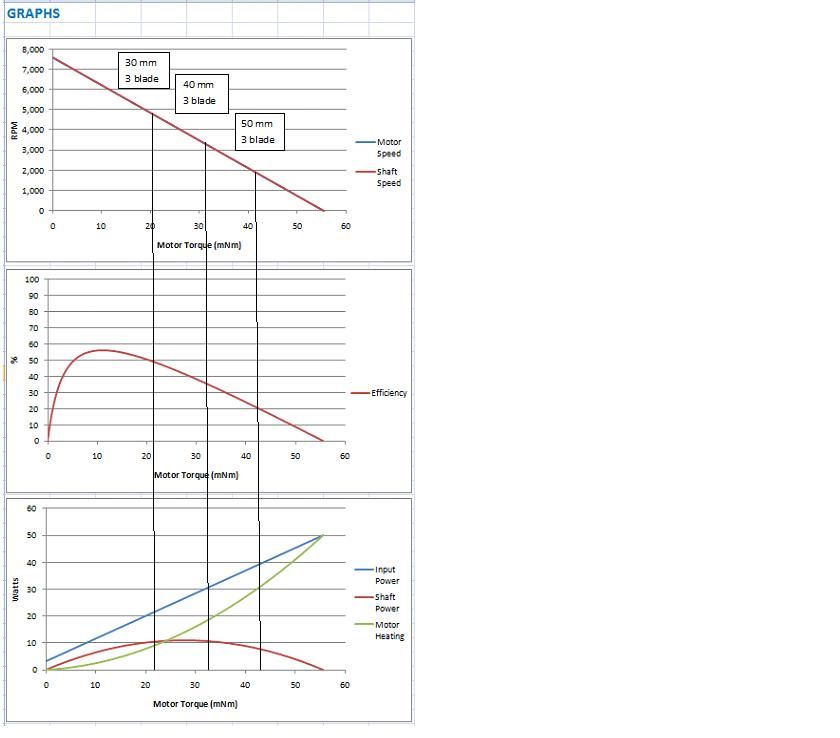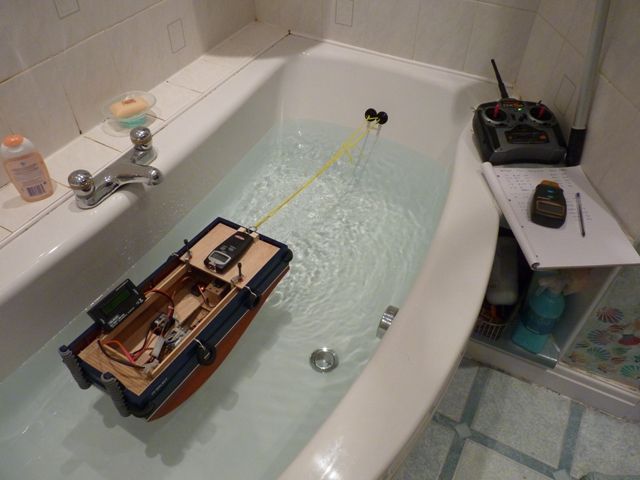Thanks for such rapid and comprehensive replies. I appreciate that scale is the hardest area, as this seems to be where many forum posts raise these problems. It is this area I think is in most need of some help.
If the prop sizing can be established, either by analytical means, by manufacturer’s recommendation or by use of tables derived empirically, then there is certainly enough known about motors to calculate how well a given motor will perform in the installation.
My experience many years ago of scratch building a hard chine 19″ cabin cruiser, fitted with a 35mm high pitch prop, an RS540 motor and 7.2V NiCd pack, as suggested in the plans, was that it went like absolute stink for 5 minutes. Then the battery died and the motor was smoking! So much for recommendations!
My current build is a 760mm Conserver survey vessel from Model Slipway, and has a roughly tug-shaped hull. It has a 50mm brass 4-blade prop and when I asked the seller about using a Decaperm motor I have lying around, he said “oh, that’ll do very nicely”. So I wanted to do some calculations before installing it to see if it was anyway suitable.
So this is what I did:
I found a graph of prop sizes and suitable speeds posted by nick_au75 at
http://www.rcgroups.com/forums/showatt.php?attachmentid=3402635. I got a reasonable fit to his curves by calculating shaft speed based on a fixed tip speed of 10m/s (chosen to fit Nick’s curves and limited to avoid cavitation). For a 50mm prop, this works out to be 3800rpm.
Then I developed an Excel model of motor performance and checked it out against the excellent motor specifications given at
http://www.westbourne-model.co.uk. I did struggle to find comprehensive specs for the Decaperm and had to measure the speed constant Kv, no-load current and motor resistance Rm. At 12V this gave a peak efficiency of 63% and a working speed range of 8,200 to 9,700rpm (at 30-70% of peak motor power). With the Decaperm’s integral (and rather noisy) 2.75:1 gearing, this gives a shaft speed range of 3,000 to 3,500rpm. Remember this is top speed and will be throttled by the ESC during sailing.
Conclusion: on paper, the Decaperm is a reasonable choice in terms of shaft speed for the 50mm prop in the Conserver kit.
This is the kind of methodology I’m proposing, albeit with simplified tools to aid calculation. Of course it would need to be validated against performance in the water! And this is where a collection of vessel models with prop, motor, battery and performance data would be invaluable. Some may find the answer to their problems directly from the table. Others with not-listed models may interpolate. Others still, perhaps with a bent for design calculations, will appreciate such a methodology being published.
Further questions, comments, (even “you must be out of your mind”) and suggestions gratefully received.






